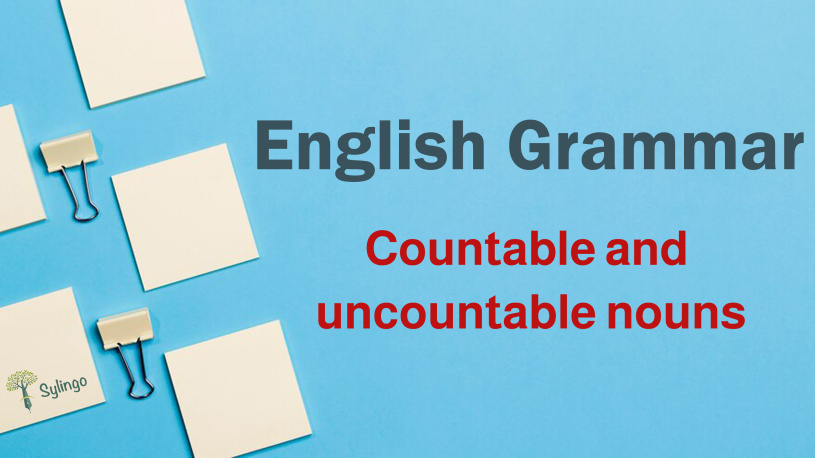Nouns have a role in forming sentences. They are words that can refer to people, places, or things.
There are many types of nouns in English. In this lesson, we will learn about two types of nouns which are countable and uncountable, and the difference between them.
Countable nouns
1- We can count them and use numbers with them.
2- We can use the definite and indefinite articles with them.
3- They have singular and plural forms. We can add S to the end of a word to make it plural.
Examples:
|
Singular |
Plural |
|
Year |
Years |
|
Flower |
Flowers |
|
Apple |
Apples |
|
Friend |
Friends |
|
Place |
Places |
Examples:
|
One book |
|
Two friends |
|
Three cars |
|
Four doors |
|
Five cats |
Uncountable nouns
1- We cannot count or use them with numbers.
2- We cannot add S to the end of a word, so they don't have plural forms.
3- We cannot use the indefinite articles a/an with them.
4- Uncountable nouns vary between liquids, gases, some foods, feelings, emotions, ideas, and abstract concepts.
Examples:
|
Water |
|
Rain |
|
Air |
|
Milk |
|
Rice |
|
Sugar |
|
Meat |
|
Fish |
|
Love |
|
Information |
|
Hair |
|
News |
|
Money |
|
Music |
Note:
We can use the definite article “The” before uncountable nouns.
Example: The music is too loud.
Measurement of uncountable nouns
We can use words and countable nouns to express the measure of an uncountable noun.
Examples:
|
One bottle of water |
|
Two kilos of flour |
|
Two cups of tea |
|
A piece of information |
|
Two grams of gold |
|
Two types of food |
Quantifiers with nouns
We can use quantifiers to determine the quantity before nouns.
We use (much - little/ a little) with uncountable nouns and (many - few /a few) with countable nouns.
Examples:
|
I do not have much time. |
|
I have a little water left. |
|
I have many sisters. |
|
I bought a few sandwiches. |
We can use (a bit of) instead of (a little).
Example: we have a bit of sugar.
Difference between quantifiers
There is a difference between “Few” and “A few”, and a difference between “Little” and “A little”.
We use little/few when the meaning of a sentence is negative and a little/ a few when it is positive.
Examples:
|
I have a few apples to make an apple pie. (It means that I don’t have enough apples to make the pie) |
|
I have little milk to make a cake. (It means that I don’t have enough milk to make the cake) |
|
I have a few apples to make an apple pie. (It means that I have enough apples to make the pie) |
|
I have a little milk to make the cake. (It means that I have enough milk to make the cake) |
That was all about countable and uncountable nouns. If you have any questions or suggestions, you can share them in the comments section below.
Exercise
1- child (Countable, Uncountable)
2- Sand (Countable, Uncountable)
3- Butter (Countable, Uncountable)
4- Tree (Countable, Uncountable)
5- Person (Countable, Uncountable)
Answers
1- Countable
2- Uncountable
3- Uncountable
4- Countable
5- Countable





